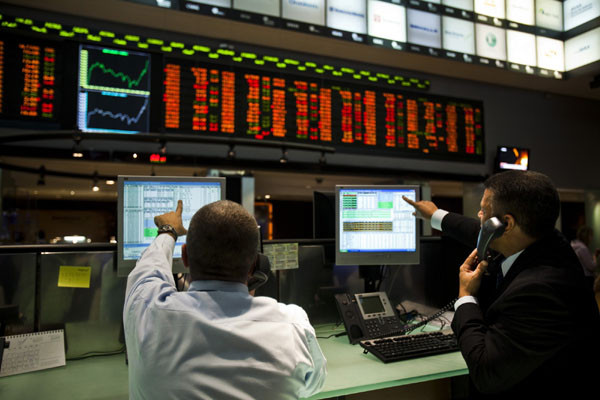Rains forecast for the Southeast and showers on the Texas Plains appeared to have triggered the surge. Increase expected in export sales. World stocks outside China projected to grow 8.5 million bales, ICAC says.
Cotton futures surged from a quiet early morning start to a 16-session high Wednesday and settled on the strongest one-day gain since the limit-up finish on Sept. 5.

December hit buy stops on the way up and closed up 128 points to 68.80 cents, just above the midpoint of its 243-point range from up two points at 67.54 to up 245 points at 69.97. It finished on a four-session high close after hitting the highest intraday price since Sept. 12.
March gained 110 points to settle at 67.91 cents, also around the middle of its 211-point range from 66.83 to 68.94 cents.
The surge appeared triggered mainly by unwanted rains forecast for areas of the Southeast this weekend from a tropical system along with showers and thunderstorms on the Texas Plains where a prolonged period of sunshine and warm temperatures is needed for crop maturity. The market’s ability to hold around nearby support around 67.50 may have added technical encouragement.
Volume quickened to an estimated 36,647 lots from 19,368 lots the previous session when spreads accounted for 5,178 lots or 27%, EFP 160 lots and EFS 50 lots. Options volume rose to 8,915 lots (5,096 calls and 3,819 puts) from 7,329 lots (5,026 calls and 2,303 puts).
Prices during the week ended Sept. 28 — the period covered by the U.S. export sales report to be released at 7:30 a.m. CDT on Thursday — gained 72 points, basis December, and ranged from 67.86 to 69.73 cents.
Net upland sales during the past four reporting weeks have averaged 148,800 running bales a week, well above the pace needed to match the USDA export forecast considering the large carry-in of unshipped 2016-17 sales. An increase from prior-week sales of 194,200 RB is generally expected.
The four-week upland shipments average of 145,100 RB per week has lagged the pace needed to achieve the export projection, likely hampered by tight supply availability and hurricane-related disruptions.
Meanwhile, with world production expected to exceed consumption this season for the first time in three years, global ending stocks could increase moderately to 18.7 million metric tons (85.9 million 480-pound bales), says the International Cotton Advisory Committee.
The world stocks-to-use ratio would remain little changed at 75%, the ICAC said in its monthly supply-demand report.
Converting its figures to statistical bales from metric tons, the ICAC estimates showed a 700,000-bale increase from last season in the world carryout. However, ending stocks in China are projected to decline by 7.8 million bales, while stocks in the rest of the world are expected to increase by 8.5 million bales.
World production is projected to rise by 10% to 116.6 million bales. Higher cotton prices in 2016-17 and better cotton price ratios to competing crops during the 2017 planting campaign resulted in cotton area expanding by 3 million hectares (7.4 million acres) to 32 million (79.1 million acres), ICAC says.
Production is expected by ICAC to increase in all major producing countries, led by a 23% gain to 21.1 million bales in the United States. Bigger crops also are foreseen in India, China, Pakistan, Brazil, Francophone Africa and Turkey.
Global cotton mill use is projected to grow at an improved 2.7% to 115.9 million bales. In comparison, world consumption grew 1.6% last season. Moderate consumption growth is expected in India, Pakistan, Turkey, Bangladesh, Vietnam and Brazil.
World trade is projected at a stable 36.4 million bales, with the United States remaining the largest exporter on shipments of 14.2 million bales or 39% of the total. Bangladesh will remain the largest importer, accounting for 18% or 6.4 million bales.
The ICAC projected world prices as measured by the Cotlook A Index at a 2017-18 average of 69 cents, unchanged from last month and down from 83 cents in 2016-17.
Futures open interest declined 1,700 lots to 229,503 on Tuesday, with December’s down 728 lots to 130,829 and March’s down 1,394 lots to 67,184. Certified stocks grew 407 bales to 4,234. There were 408 newly certified bales and one bale decertified.
Πηγή: Agfax

